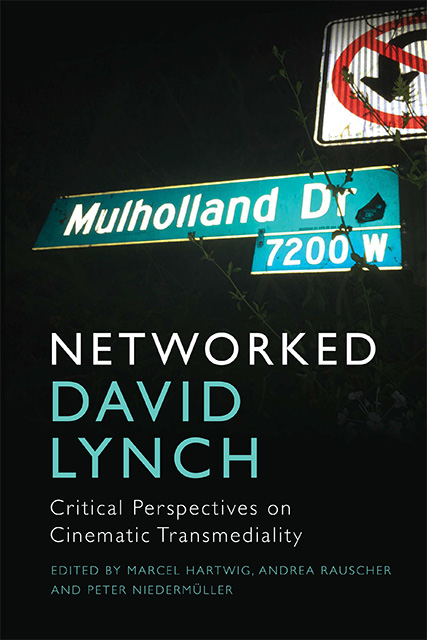Book contents
- Frontmatter
- Contents
- List of Figures
- Notes on Contributors
- Introduction: Entering Lynchtown
- Part I Approaching Intertexts
- Part II Twin Peaks as Transmedia Network
- Part III David Lynch's Transmedia Aesthetics
- Part IV Videographic Criticism of David Lynch’s Cinematic Work
- Conclusion: Leaving Lynchtown
- Index
Chapter 2 - Turn and Face the Strange: Changing Faces in the Cinema of Lynch
Published online by Cambridge University Press: 19 October 2023
- Frontmatter
- Contents
- List of Figures
- Notes on Contributors
- Introduction: Entering Lynchtown
- Part I Approaching Intertexts
- Part II Twin Peaks as Transmedia Network
- Part III David Lynch's Transmedia Aesthetics
- Part IV Videographic Criticism of David Lynch’s Cinematic Work
- Conclusion: Leaving Lynchtown
- Index
Summary
‘To me, mystery is like a magnet […] It can become an obsession’, David Lynch once said about his own work (Rodley 2005: 231). To me, the mystery of the face seems to have a key role in this obsession, one that is central to both the expression and our experience of his cinema. In his first short film, the aptly titled animated painting Six Figures Getting Sick (1967), spectators are confronted with six strange faces that convulse, vomit and combust in repeat to the sound of sirens. Indeed, I would argue that this early experiment anticipates one of the most distinctive and disconcerting forces of Lynch's filmography: his manner of playing with and making strange the face.
Every face in Eraserhead is estranging, and similar tendencies seem to be a presence in differing ways and to varying degrees in all his later films. Deformities and otherworldly features return in The Elephant Man (1980) and Dune (1984), mysterious and monstrous attributes surface in Blue Velvet (1986) and Wild at Heart (1990), and even The Straight Story (1999) arguably has almost as many unfamiliar and unconventional facial close-ups as more straightforward ones. Twin Peaks (1990), Twin Peaks: Fire Walk with Me (1992), and perhaps especially Twin Peaks: The Return (2017), are seemingly haunted by surreal or supernatural appearances, while faces in Lost Highway (1997), Mulholland Drive (2001) and Inland Empire (2006) come to change as aesthetic ideas and narrative identities connect and collide with one another. As we face Lynch's films, it always seems like strange faces have found us.
When I speak of strangeness here and say that it makes sense to speak of a certain Lynchian ‘faciality’, what I mean is that these faces create new sensations that are other or otherwise than the way we ordinarily make sense of a face. Perhaps more precisely, my key proposition is that Lynch's ‘face mystery’ is fundamental to the ‘feeling’ of his films, and furthermore that it mediates how we as spectators may understand them. This chapter therefore explores both a special mode of intermediality, namely the relationship between the medium of film and the medium of the face, and a specific form of a visually representative network that addresses the interrelations between affects and ethics.
- Type
- Chapter
- Information
- Networked David LynchCritical Perspectives on Cinematic Transmediality, pp. 28 - 44Publisher: Edinburgh University PressPrint publication year: 2023



